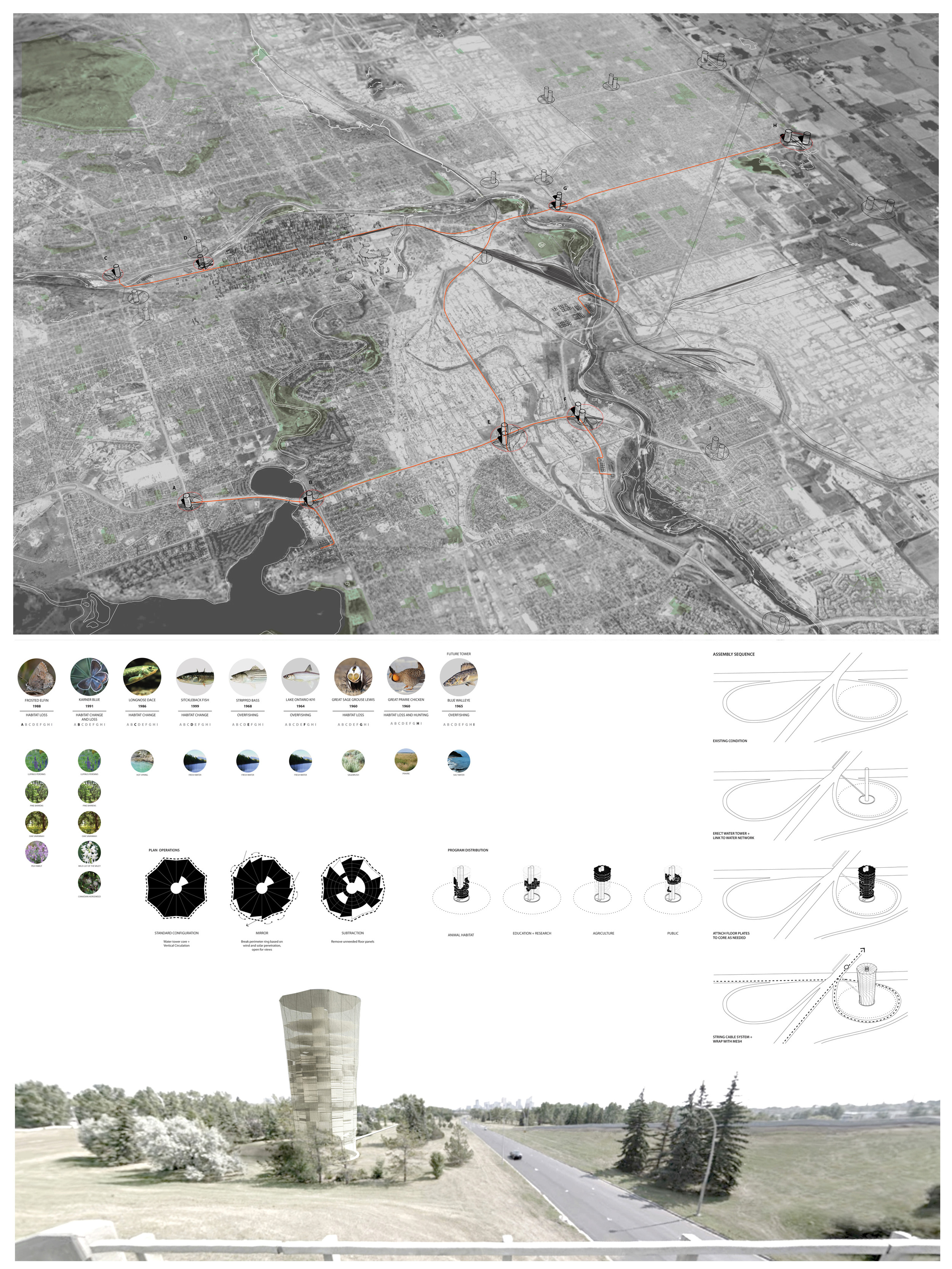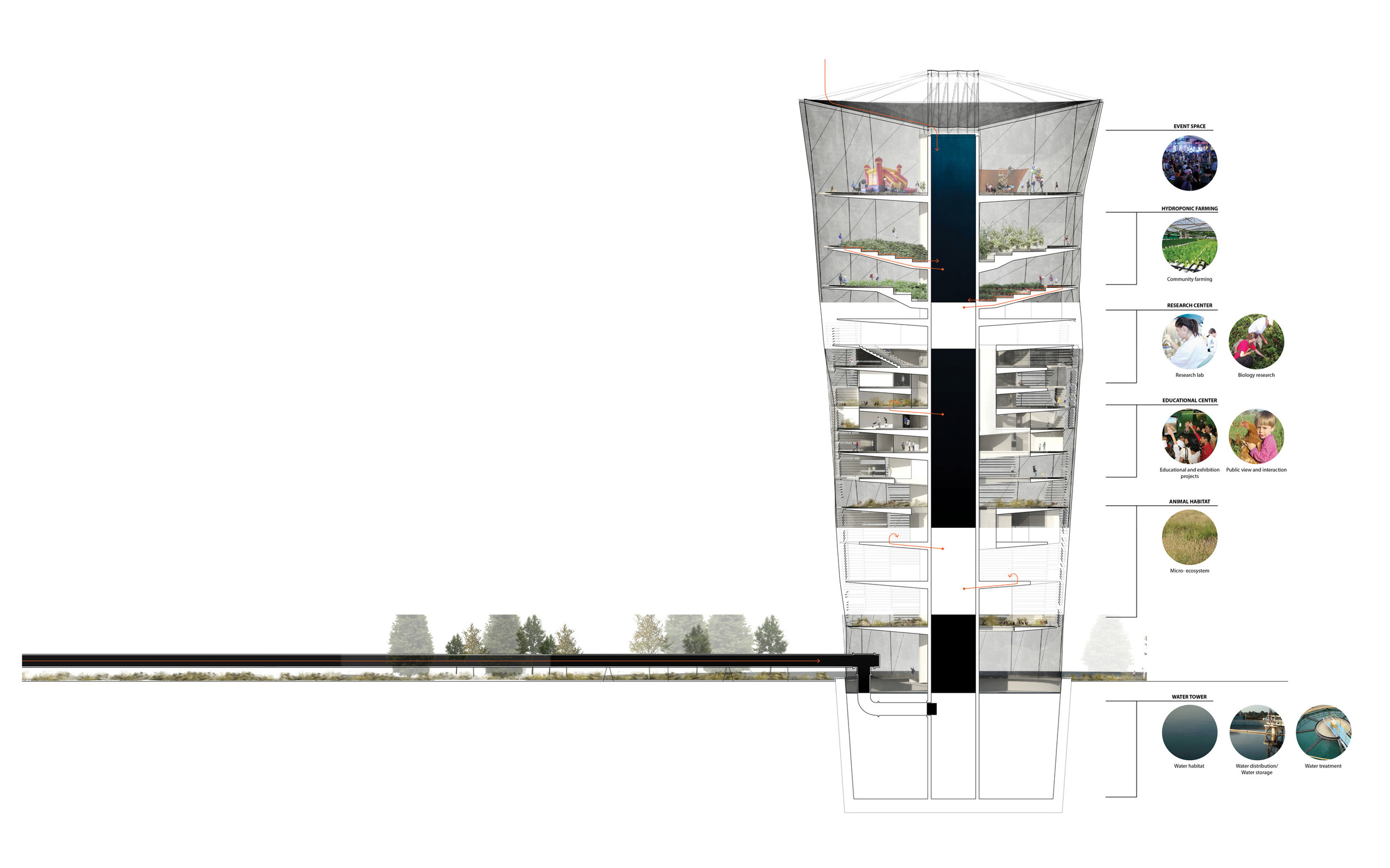Index
Lost Spaces. Calgary, Canada
d.talks, WATERSHED+ and The City of Calgary, 2015. With Dillon Phillips
The ideas competition wanted submissions to consider art, biodiversity, water management, utility, memory, and the function of the public realm in order to rethink what has been previously leftover and left behind.
The survival of human societies is frighteningly dependent on the regularity of ecological systems. Various reasons cause environmental conditions to change, and consequently, species disappear and many become extinct. Recent advancements in genome sequencing has demystified the concept of de-extinction as a way to repair anthropogenic environmental damage. De-extinction, or resurrection biology, is the process of creating an organism, which is either a member of, or resembles an extinct species.
In this proposal we question urban hegemony by returning lost spaces within the city to the lost species of Canada in order to incite awe, create meaningful discourse, and enhance environmental awareness. The proposal utilizes a modular system of platforms and screens to construct a flexible micro-ecosystem for de-extinct species within the city. Research facilities, educational centers, and discreet public viewing areas are erected to serve as incubators.
Flooding is occurring with unsettling frequency and intensity. In the summer of 2013 Calgary witnessed the worst flood in Alberta’s history, which displaced 100,000 people through the region and caused $5 billion of damage. At the core of the ecosystem towers, a cylindrical water tank captures and stores water from the river overflows. Those towers interface with the city of Calgary through its existing infrastructural arteries; roadways, commercial and commuter train tracks, rivers, water bodies, and parks.
The proposed idea specifically engages the lost space within highway intersections. Intersections happen everywhere, independently of the urban scale. Noninvasive water distribution networks follow lines of existing infrastructure, linking each of the towers to facilities to treat and effectively distribute water from river overflows.
Climate change and destruction of species’ habitats are complex global issues with irreversible consequences. With education and research we can increase society’s awareness to the fact that our collective independent choices have dramatic implications to the environment, and consequently, to our shared survival.



